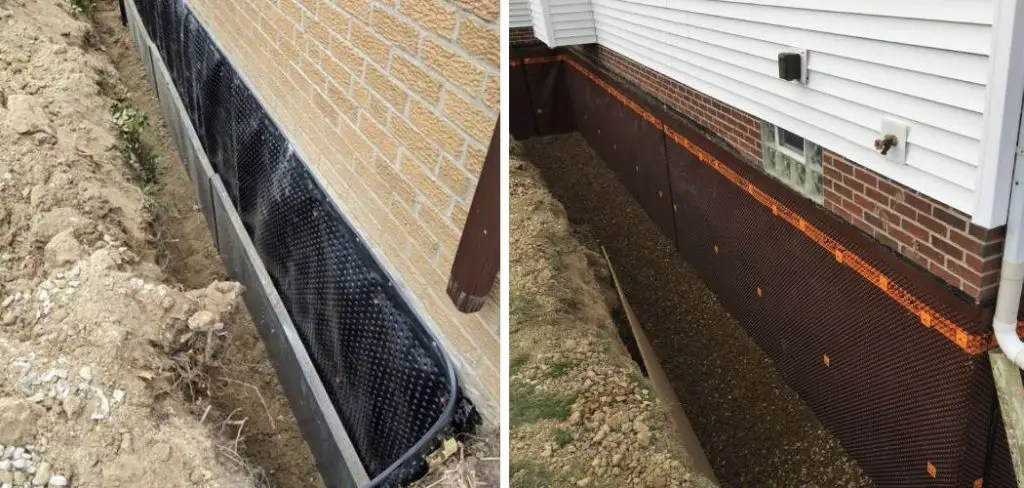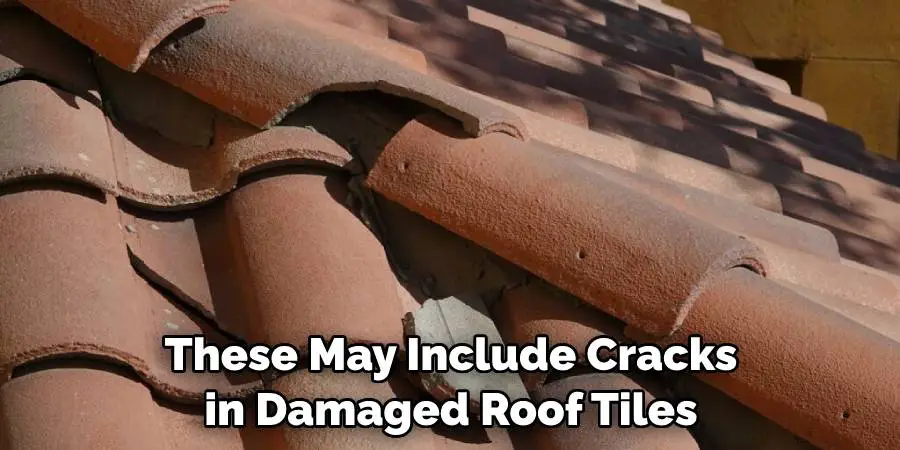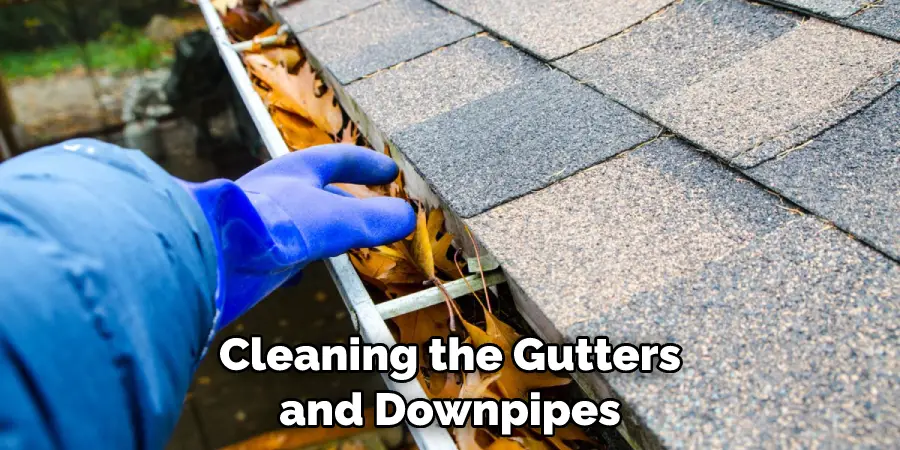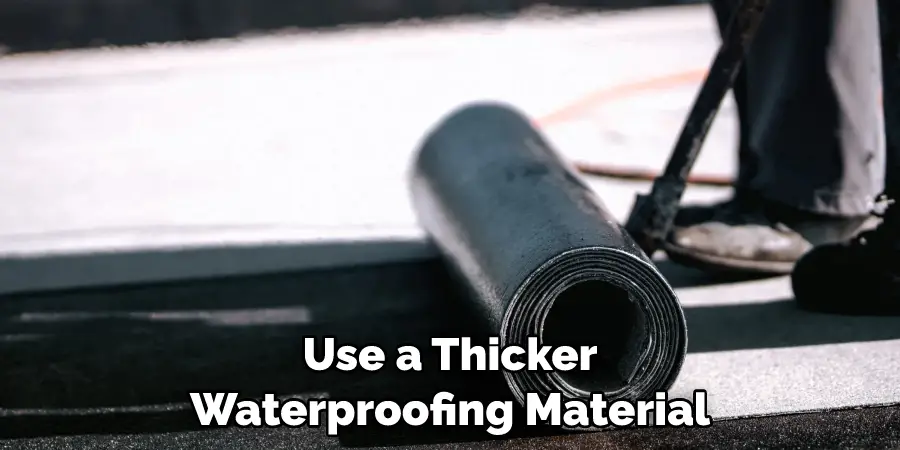Waterproofing the outside of your house is essential to prevent water damage and mold growth. It’s an important investment that will protect your biggest asset and keep your home safe and healthy for years to come.

In this blog post, we will guide you through the steps of how to waterproof outside of house, from identifying problem areas to choosing the right products and techniques.
Can You Waterproof the Outside of The House?
When protecting our homes from the elements, waterproofing is a key concern. But what about the outside of the house itself? Can it be waterproofed as well? The answer is yes, and in fact, it’s an important step in ensuring that your home stays dry and structurally sound.
Waterproofing your foundation and exterior walls can prevent water from seeping in and causing damage, such as mold and rot. It can also help to reduce your energy bills by keeping your home better insulated. While it’s not a project to take lightly, waterproofing the outside of your house is a worthwhile investment for any homeowner looking to protect and preserve their property.
Why Should You Waterproof Outside of The House?
Waterproofing the outside of your home is a crucial step in ensuring that the structure stays safe and secure. By doing so, you are preventing any potential water damage from occurring, whether it is from heavy rain or flooding. This will not only protect the structure of your home but also the contents inside.
Waterproofing also helps to prevent mold and mildew from growing, which can cause health problems for you and your family. Additionally, waterproofing can save you money in the long run by reducing the need for costly repairs due to water damage. Overall, it is important to consider waterproofing the exterior of your house to protect your home, health, and finances.
7 Steps to Follow on How to Waterproof Outside of House
Step 1: Identify the Problem Areas
Before you start waterproofing, you need to identify any problem areas that may be causing water to penetrate your home. These may include cracks in the foundation, damaged roof tiles or flashing, faulty gutters or downpipes, or inadequate grading.

Walk around your house and inspect the exterior thoroughly, paying attention to the places where water tends to accumulate. Note any signs of water damage, such as stains, mold, or dampness, and mark the areas that need attention.
Step 2: Clean and Prepare the Surfaces
Before applying any waterproofing products, you need to clean and prepare the surfaces properly. This means removing any dirt, debris, or loose materials that may prevent the products from adhering properly. Use a pressure washer or a hose to wash the exterior walls, foundation, and roof. Allow the surfaces to dry completely before proceeding.
Step 3: Choose the Right Products
There are many different products and techniques for waterproofing the outside of your house, depending on the surface type and the problem’s severity. Some popular options include sealants, waterproofing membranes, drainage systems, and coatings.
Consult a professional or knowledgeable salesperson to determine which products are best for your specific needs and budget. Make sure to choose high-quality products designed for exterior use and can withstand the weather conditions in your area.
Step 4: Apply the Products
Once you have chosen the products, it’s time to apply them to the problem areas. Follow the manufacturer’s instructions carefully, and use the proper tools and safety equipment.
For example, sealants can be applied with a brush or a roller, while membranes may require a special adhesive. It’s important to apply the products evenly and generously and to cover all the problem areas thoroughly.
Step 5: Maintain and Monitor
After you have completed the waterproofing process, it’s important to maintain and monitor the exterior of your house regularly. This means cleaning the gutters and downpipes, repairing any cracks or damages as soon as they appear, and checking the grading and drainage system periodically.

You should also keep an eye out for any signs of water damage or mold growth and address them immediately. With proper maintenance and monitoring, your waterproofing efforts can last for many years.
Step 6: Consider Professional Help
In some cases, it may be best to seek the help of a professional waterproofing contractor. They can identify and address the problem areas more effectively, and they will also be able to advise you on the best products for your needs. However, remember that this option will cost more than doing it yourself.
Step 7: Know the Laws
In some areas, there may be local regulations and building codes that you need to follow when waterproofing the outside of your house. Check with your local authorities to determine what is required in your area before beginning any work.
That’s it! You’ve now learned the basics of how to waterproof outside of house. Remember, proper preparation and maintenance are essential for a successful waterproofing project. Now you can enjoy a dry and comfortable home year-round!
5 Considerations Things When You Need to Waterproof Outside of House
1. Understand Your Climate
The first step in waterproofing the outside of your house is to understand your local climate. Different climates will require different types of waterproofing materials and techniques.
For example, if you live in an area that experiences heavy rainfall or snowfall, you may need to use a thicker waterproofing material than if you live in an arid climate. Additionally, certain climates may require additional steps, such as installing drainage systems or using additional sealants to ensure your home is properly protected from the elements.

2. Choose the Right Materials
When it comes to waterproofing the outside of your house, choosing the right materials is essential. There are various types of waterproofing products available on the market, including sealants, membranes, and coatings. It is important to research each type of product before making a decision so that you can ensure that you choose one that is suitable for your needs and budget.
3. Consider Your Budget
It is also important to consider your budget when it comes to waterproofing the outside of your house. Depending on the size and complexity of the project, waterproofing can be a costly undertaking. Therefore, it is important to research different options and compare prices before making a decision to ensure that you are getting the best value for your money.
4. Hire Professional Help
Waterproofing projects can be complex and time-consuming, so hiring professional help may be beneficial if you don’t have experience with this type of work yourself.
Professional contractors will have experience with all aspects of waterproofing projects and will be able to provide advice on which materials and techniques are best suited for your particular needs and budget.
Additionally, they will be able to complete the job quickly and efficiently so that you don’t have to worry about any delays or problems with the project down the line.
5. Follow Up Regularly
Finally, once you have completed a waterproofing project outside your house, it is important to follow up regularly with inspections and maintenance tasks to ensure that everything remains in good condition over time.
This includes checking for any signs of wear or damage and cleaning any dirt or debris from around windows or doors that could cause water infiltration into your home if left unchecked.

By following these tips, you can ensure that your home remains properly protected from water damage for years to come.
Benefits of Waterproof Outside of House
As a homeowner, you understand the importance of protecting your house from external elements that could potentially damage it. That is why waterproofing your home’s exterior is such a crucial investment. By taking this step, you ensure that your walls repel moisture from the rain, snow, or even groundwater and dampness, which can wreak havoc if not properly addressed.
Additionally, having a waterproof outside extends the life of your home’s exterior paint, preventing water from seeping into the walls and creating unsightly stains or mold.
Finally, waterproofing increases the value of your property by demonstrating to potential buyers that you have taken extra steps to protect the structure from the elements, thus making it more attractive. Overall, the benefits of having a waterproof outside are numerous, and the peace of mind that comes with it is priceless.
Some Common Mistakes People Make When Trying to Waterproof Outside of House
When it comes to waterproofing the outside of your house, it can be a daunting and overwhelming task. People make numerous mistakes when attempting this task on their own.
One common mistake is using the wrong type of sealant for the material they are sealing.Another mistake is improperly cleaning and drying the surface before applying the sealant. This can cause the sealant to not properly adhere to the surface and result in leakage.
Additionally, not sealing all the necessary areas can lead to water infiltration in the future. It’s important to identify potential problem areas and take the time to properly seal them to ensure long-lasting protection against water damage. Don’t make the mistake of cutting corners when waterproofing your home. It could cost you more time and money in the long run.
Conclusion
Waterproofing the outside of your house may seem daunting, but it is necessary to save you a lot of trouble and expense in the long run.
By identifying problem areas, cleaning and preparing the surfaces, choosing the right products, applying them properly, and maintaining and monitoring the exterior regularly, you can prevent water damage and mold growth and ensure the safety and health of your home and family.
Don’t hesitate to seek professional advice if you need help, and enjoy peace of mind with a waterproof house. Thanks for reading our post about how to waterproof outside of house.
